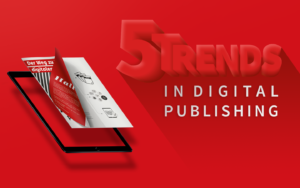Google’s model of Micro Moments has been buzzing around in corporate marketing for a few years now. It is considered a trend-setter in the marketing of brands and products due to its focus on a very specific moment in the customer’s digital usage – the moment of decision.
Micro Moments explained briefly
In practice, these are moments when the user urgently needs information to move forward. For example, when the user is hungry, they search for a nearby restaurant; when reading, if they encounter an unknown word, they seek out its meaning. They wants to assemble a shelf and don’t know which screws are suitable or wish to buy exactly those new sneakers that their friend is wearing. At such moments, users whip out their smartphones and quickly google for the solution to the problem.
These precise moments offer enormous potential to reach users and readers with appropriate content in the right format. This in turn can lead to the purchase of a product or magazine or the conclusion of a subscription.
>>Creating Micro Moments: Reaching the user at the moment of decision
with matching content.<<
Product content is the product itself
First of all, these micro-moments require content that delivers fast answers to the potential customer’s questions. This can be information on a product, such as test reports, or examples of its application to provide insight into everyday experiences with the product.
Consider this content for Micro Moments as a product itself – media makers will probably find this easy. Approach the content as you approach product development: Provide the user with real added value, solve a problem from their everyday lives with the help of your content. Because there is a lot of potential in such content to gain the customers’ trust and convince them in a micro moment – with subsequent product purchase.
>>The right content solves a user problem.<<
Provide good content with added value
For the right content, it helps to know the intentions and real interests of the users. These can be determined based on qualitative data, for example from interviews. Talk to your magazine readers or product users and find out why exactly a particular product is used and how it is used.
Instead of interviews, groups and chats on social channels are also suitable for reaching young users and readers. This is usually more informal and also has a positive effect on the ‘follower’ statistics.
After an interview or a social media survey, it is useful to understand your customer’s journey. Find the micro-moments that led to the decision for your product.
Question the reasons and motives for the purchase and also ask about subsequent use. This will give you clues as to what content or product features are well received by readers and what you should expand. Indeed, you may realize that certain content is not interesting or additional products are being produced on the market.
>>Pick up the phone or hit the keys.
The main thing is simply to talk to your customers and readers. You will be surprised what you can learn from them. <<
- Top information on current world events:For example, you publish a sports magazine and the World Cup is coming up? Make sure you publish all results and news on current games as soon as they are available. For example as a live ticker. Who should inform the user, if not you?
- Instructions on how to cook, assemble, construct, repair, etc.:A hardware store – and by extension DIY magazines too – benefits when DIY enthusiasts come to them to buy all the materials they have shown in a tutorial video or put together in a finished shopping list.
- Definitions and brief explanations of (technical) terms: Trade, special interest, or gossip magazines all have specific expertise on topics and people that users are looking for.
- Graphics, overviews and schemas that clearly illustrate complex relationships:Political-social conflicts or scientific theories are often complex and cannot be grasped immediately in their entirety – but ten videos of five minutes might do the trick.
- Directions and tours for your free time:You have landed in the middle of nowhere and have to spend two hours hanging around? A few local tips would certainly come in handy, perhaps on the history of the location or even shopping opportunities.
- Experience and test reports for products and locations:Is the restaurant really good? Should I buy this washing machine or another? Compile clear summaries of test reports and customer reviews on your products.
Tips for Micro-Moments content:
The right content in the right form
Often this not only tells you the kind of content that is popular, but also how and where it is used. These answers provide interesting input for the most suitable content format – and for perfect micro moments. Prepare your content accordingly in different variants: text, videos, graphics or in audio format – you have a wide range of options.
- Text:A term or a product description can be conveyed quickly in text format. Make the most important information stand out with graphic highlights (bold font, underlined, quotes).
- Video, Slideshare:
Guides and How-to’s are most speedily captured in videos, slideshares, or image galleries that explain each step individually. - Audio:
Listening to news and reports on current topics is the perfect parallel activity, for example, while travelling, cooking, or tidying the house. - Pictures and graphics:EA complex subject matter cannot be grasped in a short time, but you can still help the mobile user with a graphic or a short text summary containing the most important cornerstones. You can then offer the more in-depth content for purchase.
Format tips for perfect micro moments:
No matter which format you choose, be sure to develop short, original, creative – including entertaining and easily digestible – content that can also be consumed within the Micro Moments.
Finally: Pay attention to micro moments in your own everyday life. What content and tools do you use to make a decision? What formats or content might help advance the procedure even faster? Such considerations can raise awareness of your customers mental processes – and lead to new ideas.

